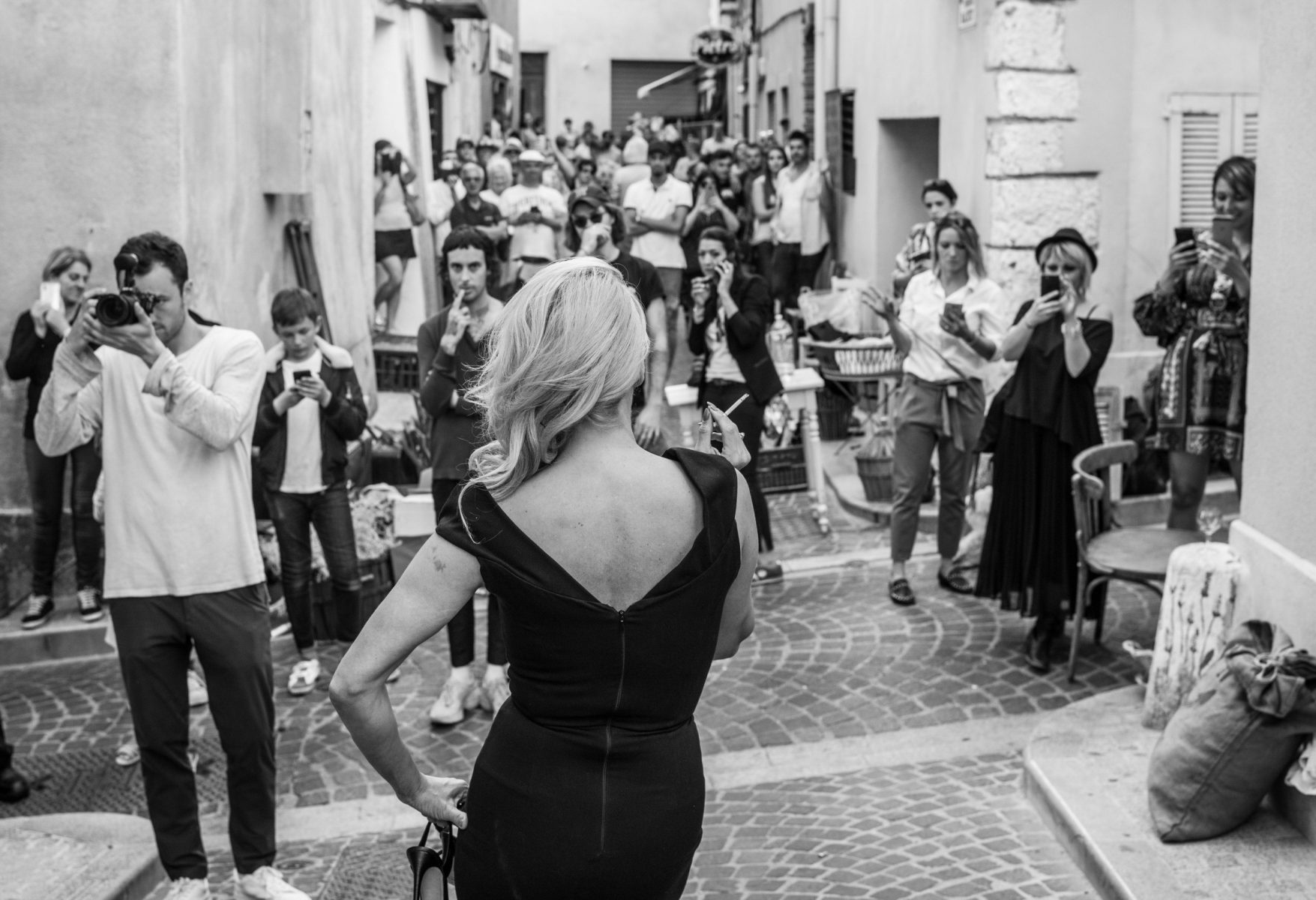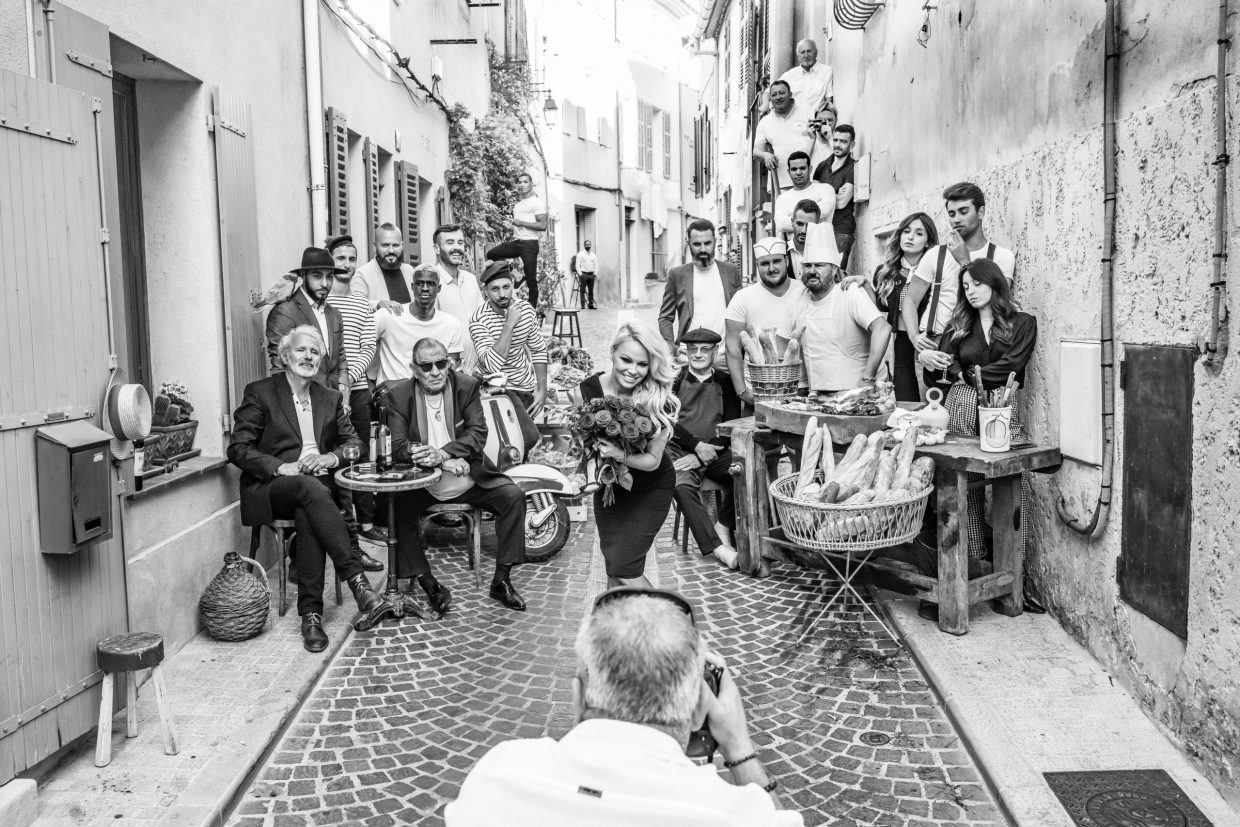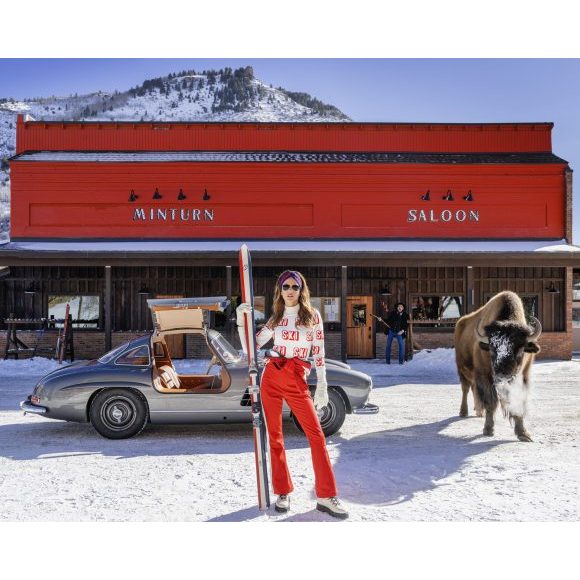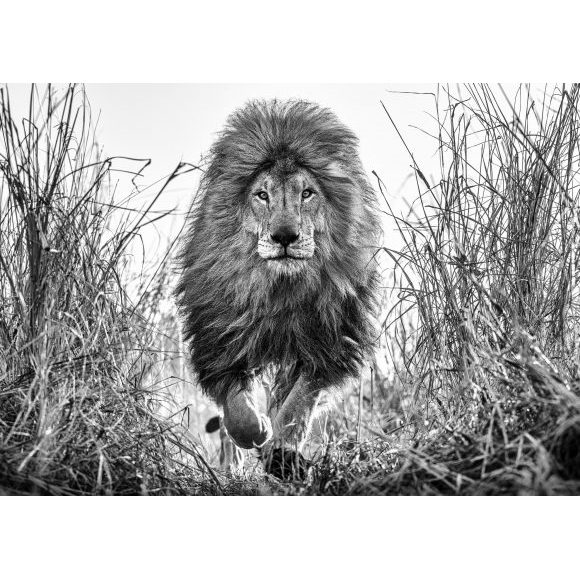Letter From Provence

I had the good fortune of sitting next to an Editor in Chief from Condé Nast at dinner in London recently and there were many things I wanted to ask him. Clearly the magazine industry is going through a period of considerable change, as is the fashion industry. Gender equality has moved from being a peripheral issue to the epicentre of daily decision making in many industries.
It is no longer about sensing the winds of change, as it is about making sure you are not picked up by a tornado and thrown into a brick wall. Whatever climactic force grabbed Dorothy and forced her to spend some time with the Tin Man and the Wizard of Oz looks subdued compared to the twin storms of female empowerment and digital media.
When I asked my neighbour whether his world has ever changed faster than in 2019, I sensed immediately that it was a rhetorical question. He told me the story of how one magazine in his empire - Glamour - went from making over £12m in a year with 150,000 subscribers to folding within a matter of a few years. It is a Darwinian game and advertisers are brutal - magazines that are losing their audience become price takers with the big brand advertisers, not price makers and the magazine gets thinner. The thinner the magazine, the greater the subscriber attrition and then the less per page of advertising. Editorial staff leave before they are told to and the end is quick. It is the ultimate vicious cycle and in the new world of disruptive social media influencers and bloggers, this is a brutal game.
When I started off as a sports photographer in 1984, “the Holy Grail” of publications was Sports Illustrated. It was the bible of editorial sports journalism and employed the most celebrated writers and photographers in America. It did not matter whether you were a Steelers fan, a Red Sox fan, John McEnroe fan or a Jack Nicklaus fan - you bought Sports Illustrated religiously every week. It became the first magazine in America to sell over 1 million copies a week and at its peak, it was read by over 25 million people.
But the glory days have gone and the immediacy of digital media has hurt Sport Illustrated badly. The magazine has become markedly thinner and many talented staff journalists and photographers have lost their jobs as much of the content is sourced from outside parties and agencies. The vicious cycle looked like it was happening too at this most lauded of US institutions. Last month the magazine, with its 65-year heritage and that famous swimwear edition, was sold, lock, stock and barrel for just $110m - less than the transfer price of a top European footballer.
The Sports Illustrated story is reflective of an era in which the time is always now. Maybe it was always so, but digital media has no doubt accelerated change and pushed agendas on the table quicker than traditional media ever did.
At the recent Sotheby's photographic auctions in New York and London, many lots were either unsold or at best attracted disappointing hammer prices. A good number of these were of the female form genre and I found this extremely instructive. It is clear that photographs of nudes from Paris in the 1960s and 1970s are not what buyers are looking for in 2019 - it just does not sit comfortably with where we all are.
Helmut Newton’s work is no less estimable, no less integral to the history of photography, but at the margin, it attracts less interest at auctions. It is subjective to discuss whether this is specifically because the objectification of women has become something of a minefield or whether collectors are looking for bigger art for bigger walls. It has nothing to do with Helmut Newton’s brilliance with a camera.
My dinner neighbour at Conde Nast must spend more time deliberating over issues on female portrayal than most and in his opinion the last two years have seen attitudes move so quickly and so materially that to be behind the curve can be the innocent consequence of a two-week vacation.
The job of staying informed has clearly been complicated by digital influencers who operate one step back from the front page. Traditionally it was enough for us to read the The New York Times at the weekend or the Weekend FT. But not in 2019, where so much communication happens away from traditional platforms.
Tim Ferriss - author of The 4-hour work week and one of the most followed podcasters in America, has a very important voice. If he says have your eggs scrambled not fried, frying pan sales fall off a cliff. Tim is a front row forward in the influencer movement.
Last week, he gave us a little plug. It was no more than 100 words, but within a few minutes of his kind reference, my phone was having a bad hair day. But my phone got off lightly compared to our website which crashed. We spend quite a bit of money on our website and our bandwidth, but quite clearly not enough for one email from Tim. This was a growing up moment for me. I never imagined one man’s word in New York could cause us a system failure.
I was very conscious of these contemporary issues on my recent assignment to photograph Pamela Anderson in Provence, France. Many men my age grew up with Pamela - not literally of course - but with a poster of her on their bedroom wall. She exuded sexuality and was the personification of “the beach babe”.
Her life has been colourful and unfortunately played out fully in the public eye. Traditionally she has either been photographed naked (Playboy) or wearing very little - (almost everywhere else.) She is honest about her sexuality and what you see is what you get. But she now also has an important voice and is an activist in many areas - including conservation and animal rights. She recently visited Julian Assange in prison which suggests both a sense of personal loyalty and an indifference to what people might think. She has probably always had that indifference to what others say - she is indeed a force of nature.
It was important that we did a first-class job with Pamela and that required our process to be both creative and authentic. We started with a blank canvas and our team had total creative control over the concept and then the execution of that concept. Pamela had to approve, but we would have responsibility and accountability.
Only two things were known - firstly we had Pamela and secondly, we knew that we would shoot in Cassis - a charming coastal village between Marseille and Toulon, because that is where Pamela currently lives. On these two things alone, my instincts immediately led to the idea of creating a Brigitte Bardot story - that surely was the best way to play the cards available to us.

Bardot was perhaps the most famous sex symbol of all time and as an actress she often portrayed sexually emancipated personae with hedonistic lifestyles - perfect casting. Provence and the narrow streets of St Tropez became her spiritual home and here I was with another iconic blonde sex kitten from the next generation. The similarities don't stop at aesthetics - both Bardot and Anderson are now animal activists with an untamed voice.
Two other directives were clear in my mind - firstly we needed a cast of characters to add context and narrative to a story that needed to be layered. The sense of place could not come simply from shooting a portrait of the Baywatch star in a cobbled street in Provence - that would be lame and dull. We are many things - but we don't do dull.
The second cognitive prompt was that I should be glamourising Pamela as opposed to gratuitously playing to her sex symbol stereotype. This is not easy to fine tune as there is a thin dividing line between the two and sex appeal is not a variable that is easy to be reductive on with Pamela Anderson. But my leaning was towards her wearing evening make up, an evening dress and high heels for exactly that reason. At a time when the objectification of women is dangerous, I went for Dolce & Gabbana more than Playboy.
My team, led by Alex Ames, did an excellent job assembling a cast that I would then place behind Pamela. I wanted the collective to “smell of the South of France” - they should be defined characters whether they be artisans, playboys or drinkers and importantly they should be styled in a timeless Provence manner. My instincts were that the photograph should look as if it could have been taken in 1965 as well as 2019 - without that we would lose any Bardot reference.
The locals of Cassis were wonderfully cooperative and the Mayor allowed us to close down a few roads. There were a huge number of people looking on as we prepared that evening and the town was buzzing, but there was a sense of respect because Pamela is as adored in Provence as she was on the beaches of Malibu. I said to my crew repeatedly “Thank goodness we did not shoot in St Tropez” - we would have been mobbed and it would have been chaos.
The bunch of roses was a smart last-minute addition to the set and I think Pamela’s care free and breezy nature is captured by the way she carries her shoes. She owns the moment and looks classically glamorous - she plays a camera like Messi plays a football. But equally it is the cast of chaos behind her that makes the picture interesting. It is an image that you can look at for a long time - which was always my intent.
I travelled to Marseille for the Pamela shoot from Kenya where I had been on a commercial assignment with Land Rover. That represented quite a change in subject matter - although both the car and the actress are icons. Land Rover’s much anticipated Defender car is not launched until the autumn, but a prototype arrived under strict security to Borana - a stunning conservancy nestling under Mount Kenya. It was an honour to be the first person to photograph this vehicle and to do so in such a majestic setting.
I find most car photography dull or hackneyed. My idea was to do something fairly dynamic with their new product. I wanted to be greedy and have both action and animals in the frame. It was ambitious, but as Wayne Gretzky said “you miss all the shots you don't take”. This is a crucial launch for Land Rover and there was no point in DHL taking the car all the way to the equator for me to take a picture of a stationary vehicle in a field.
Normally when I work with elephants in Kenya, we tend to shoot early in the morning and late in the afternoon, but on this occasion my concept was to work the car in an area of natural water - and elephants don't tend to come to the water in Borana before around 10am.They make the journey to cool down as well as drink and before 10am it is not hot enough for them to want to take a bath. Waiting until bathing time meant we would be working in quite harsh light, but then again that allowed me greater flexibility with my camera settings.
I think we did a good job with Land Rover - but we will let others decide. What I learnt is how passionate the Land Rover team are about their new car - they talk of the Defender as if it is a person that needs to be shown love and respect. I guess that’s the way some people are with cars. I can’t say I have those emotions, but it was rather refreshing to be working on a landmark British engineering project.
I must close this month’s essay with a plug for a big picture. The image Gandalf - on pages 16 and 17 is a photograph that I was excited to see at the printers in LA. I don't often have this “rush” these days, but just enough to know that I am engaged but discerning. It is the best part of the job - seeing a photograph like this coming off the print drum.














